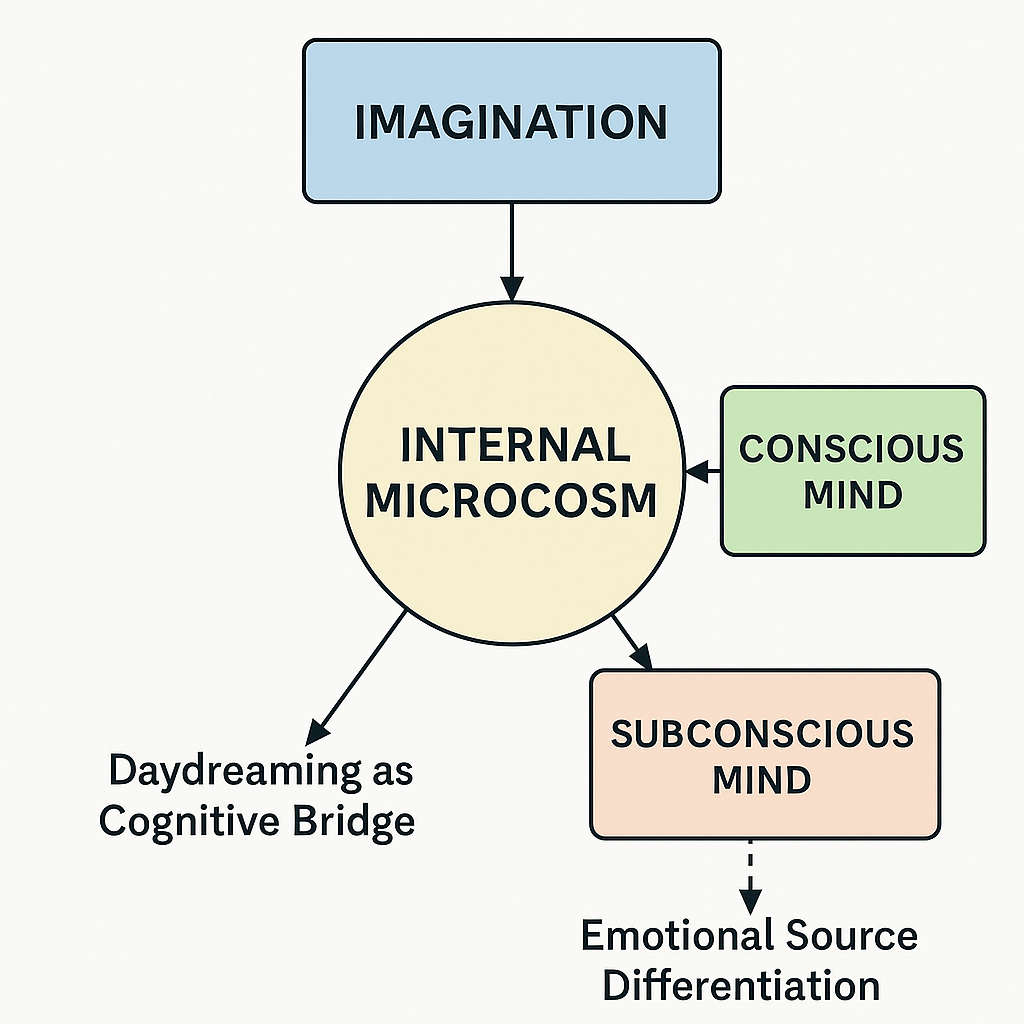The Role of Imaginative Play in Early Childhood Cognitive and Emotional Development

Abstract:
This article explores the developmental significance of imaginative play and daydreaming in early childhood. By examining how young children create internal microcosms and imaginary scenarios, it highlights the interaction between conscious and subconscious processes, emotional regulation, and cognitive growth. The discussion also addresses the psychological mechanisms that mediate the child’s connection between inner experiences and external reality.
Introduction:
Imaginative play is a foundational aspect of early childhood development, allowing children to explore complex ideas, social roles, and emotional states within a safe, self-generated framework. This phenomenon contributes to cognitive flexibility, creativity, and emotional resilience. Daydreaming, as an extension of imaginative play, enables the integration of internal thoughts with external experiences, providing a bridge between subjective consciousness and physical reality.
Methods / Analysis:
Observational studies of children aged 2–7 were analyzed, focusing on behaviors indicative of imaginative engagement, such as the creation of miniature worlds, role-playing, and recurring narrative structures. Cognitive mapping and qualitative interviews with caregivers provided insights into patterns of emotional response, attention allocation, and problem-solving strategies.
Results / Discussion:
- Internal Microcosms: Children often construct detailed internal worlds characterized by spatial coherence, narrative continuity, and rule-governed interactions. These microcosms serve as secure zones for testing scenarios, understanding causality, and exploring moral concepts.
- Daydreaming as Cognitive Bridge: Daydreaming facilitates a connection between conscious reflection and subconscious processing, supporting emotional regulation and the integration of early experiences. Children’s engagement with imagined challenges mirrors real-world problem-solving and social negotiation.
- Emotional Source Differentiation: Observations suggest that emotional experiences derive from two primary sources: intrinsic imaginative processes and externally mediated cognitive input. Imaginative engagement fosters empathy, creativity, and resilience, while reliance solely on external stimuli may increase susceptibility to stress and social pressures.
- Impact of Knowledge Acquisition: Progressive exposure to structured knowledge and social norms can create tension between the child’s imaginative freedom and the perceived constraints of reality. This cognitive attachment to external information can reduce spontaneous imaginative activity but may enhance analytical skills when balanced appropriately.

Conclusion:
Imaginative play and daydreaming are essential components of early cognitive and emotional development. They provide safe, structured spaces for exploration of the self, social relationships, and complex concepts such as justice, heroism, and morality. Maintaining a balance between imaginative freedom and reality-based learning supports the holistic growth of children’s minds, ensuring both creativity and adaptive competence.
